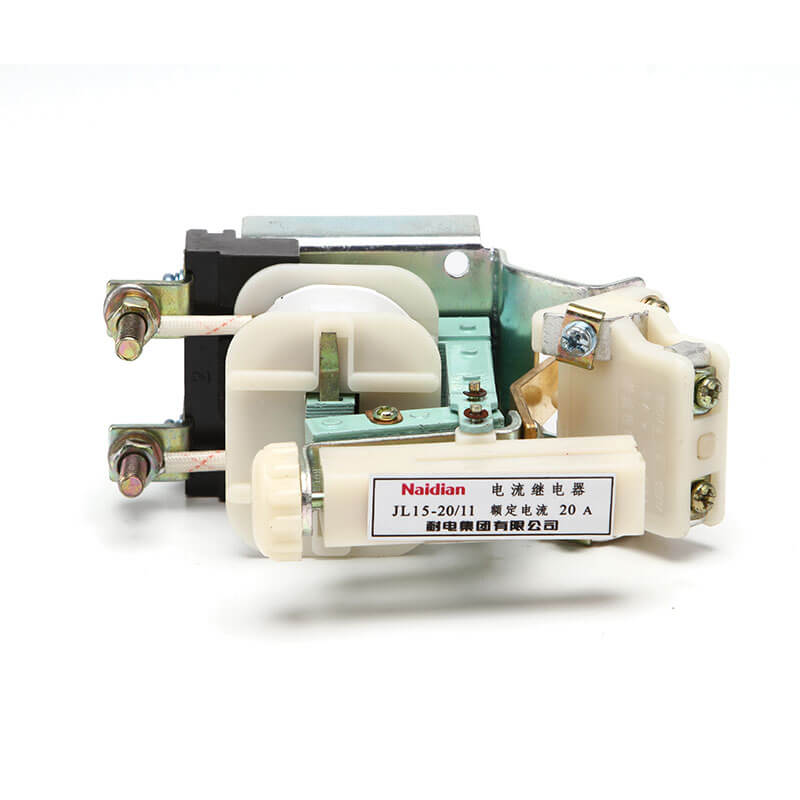What Is AC/DC Current Relay
A versatile protective device for both AC and DC circuits, the AC/DC current relay (or Current Sensitive Relay) monitors current flow and triggers protective actions when abnormal current levels are detected. Below, we break down its definition, functionality, applications, and key purchase considerations for easy navigation.
What Is an AC/DC Current Relay?
Definition: A specialized relay designed to detect and respond to alternating (AC) or direct (DC) current deviations from safe operating ranges.
Core Features:
Adjustable current setpoints (define threshold values for activation).
Hysteresis control (prevents rapid on/off switching during minor current fluctuations).
Mode selection switches for AC/DC detection and undercurrent/overcurrent response.
Design: Typically compact with a single set of contacts (configurable as normally open/closed) to interrupt circuits or trigger alarms.
Key Functionalities
1. Current Detection & Protection
Monitors for:
Overcurrent → trips to disconnect power.
Undercurrent → alerts or switches to backups.
Customizable sensitivity: Set precise current thresholds for your application (e.g., 0.5A to 50A for DC, 1A to 100A for AC).
2. Hysteresis Control
Prevents "chattering" (unstable switching) by requiring a minimum current deviation from the setpoint before activation.
3. Flexible Mode Selection
Toggle between AC/DC detection via physical switches.
Choose response type: Overcurrent protection (default for motors) or undercurrent monitoring (e.g., battery systems).
JL15 Series AC/DC current relay
Jl15 series AC / DC relay (hereinafter referred to as relay) is a kind of electromagnetic relay with instantaneous current action, which is used as over current protection element in the primary circuit of AC 380V 50Hz and below DC 440V and current to 1200A.

Applications
1. Industrial Systems
Motor protection: Prevents overload burnout in pumps, conveyors, and fans (both AC induction and DC servo motors).
Power distribution: Guards transformers and generators in substations; isolates faulty DC circuits in renewable energy storage (solar/wind farms).
2. Battery & Power Management
EVs & UPS: Monitors charging/discharging currents to avoid overcharging (DC) or deep discharge.
DC power supplies: Protects sensitive electronics (e.g., medical devices, telecom gear) from overcurrent damage.
3. Electrical Safety
Triggers alarms or shuts down systems in case of current anomalies, reducing fire risks and equipment downtime.
Purchase Considerations
1. Current Specs
Type: Ensure support for your circuit’s current (AC/DC or both).
Range: Match the relay’s minimum/maximum current to your application (e.g., 0–20A DC for a robot arm).
2. Adjustability
Setpoints: Look for precise threshold tuning (e.g., via potentiometers or digital interfaces).
Hysteresis: Adjustable margins (e.g., 5–20% of setpoint) for stable operation in fluctuating environments.
3. Contact Ratings
Type: Choose NO (normally open), NC (normally closed), or changeover contacts based on your circuit logic.
Load capacity: Verify voltage (e.g., 250V AC, 30V DC) and current (e.g., 5A resistive load) ratings to avoid contact burnout.
4. Environment & Mounting
Conditions: Check temperature (-20°C to +60°C typical), humidity, and vibration resistance (IP20 for indoor, IP67 for harsh environments).
Mounting: Ensure compatibility with your setup (DIN rail, panel mount, or screw terminals).
5. Reliability & Compliance
Brands: Prefer trusted names (e.g., Festo, Omron) with proven durability in similar applications.
Certifications: Look for UL, CE, or IEC standards to ensure safety and performance.
6. Cost vs. Features
Basic models: Suitable for simple overcurrent protection.
Advanced models: Include digital displays, remote monitoring, or wide temperature ranges for critical systems.
Conclusion
AC/DC current relays are versatile and robust workhorses in electrical and electronic systems. They provide essential isolation between control circuits and power circuits, enabling safe and efficient switching, protection, and automation based on electrical current levels. Understanding the fundamental differences between AC and DC coil operation, carefully evaluating contact ratings (especially when switching DC loads), and considering the specific application requirements are paramount when selecting the right relay.

